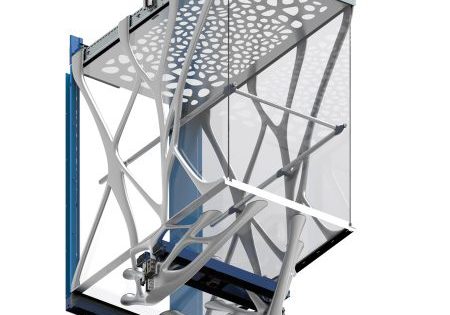Vertical Transportation Space Era
May 5, 2023

From Science-Fiction to Viable Engineering Solution and an Emerging Market
by Yuval Valiano-Rips and Maya Glickman-Pariente
This paper was presented at the 2022 International Elevator & Escalator Symposium in Barcelona, Spain.
1. Abstract
The Space Elevator is a well-known concept for a cable-based vertical transportation (VT) vehicle from the ground up to the geostationary orbit. For the past century, science fiction authors and scientists have discussed this challenge that has yet to be achieved.
Though the possible market for a Space Elevator is huge, the materials needed for the construction are still to be commercialized and the technology needs to mature.
In parallel, a new market for VT will emerge in the early 2030s with missions to the Moon and Mars, in which elevator companies must take a leading role.
Few space programs have already been initiated and funded to build human settlements on the Moon, Mars and beyond. The major program is the “Artemis” international mission, led by NASA, which includes building habited base camps on the surface of the Moon by 2025, and Mars by 2035.
These new settlements will need different types of VT solutions — both for people and for cargo.
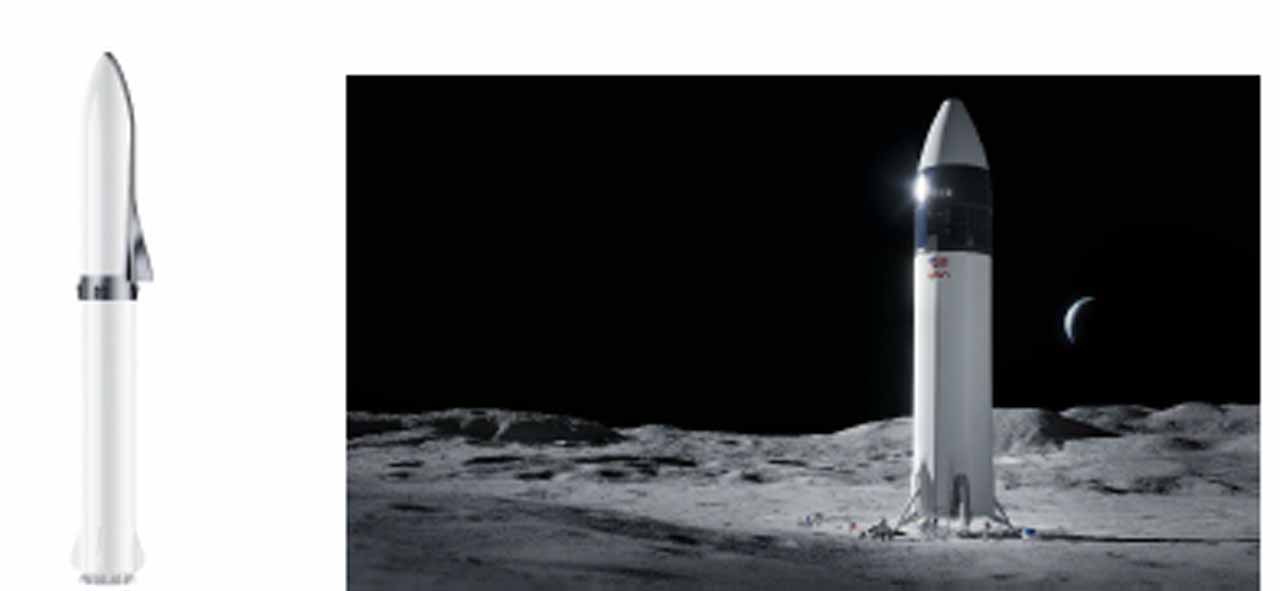
Dealing with challenges, such as taking huge amounts of equipment down (and up) from vertically landing spaceships to the surface, vertically transporting materials needed to support the camp from underground mines or just traveling from the surface to the safety of the underground habitat, require us to reimagine elevators: different gravity force, different atmosphere density and composition, stronger radiation and other challenges our industry should start addressing.
These new VT use cases are joined by new space-era hotels already being planned by several companies. Space stations built for fancy vacations in Low Earth Orbits (LEO) around earth would also need solutions to transport people around.
Space-related industries, train or car industries or other technology companies could solve these problems. But we believe the VT industry must be ready to encounter these next decades’ needs before any other industry takes the lead.
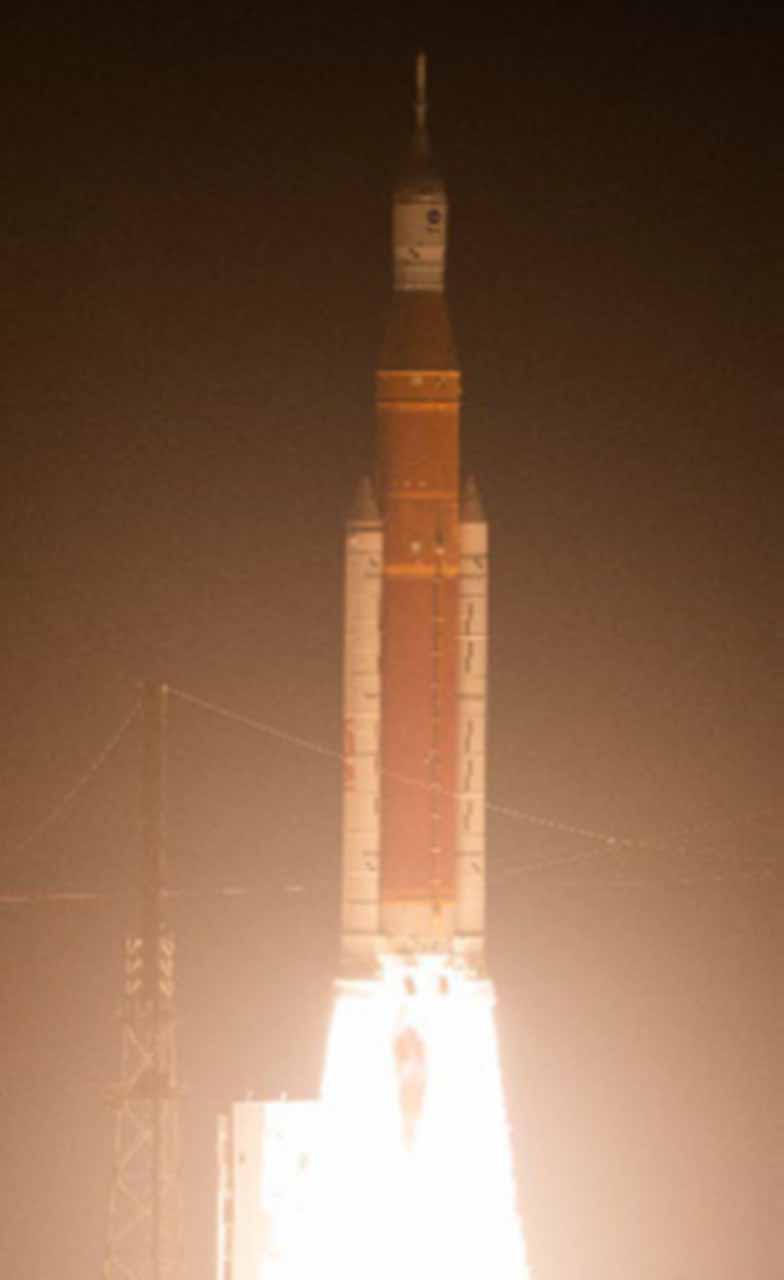
In our paper, we have researched the challenges for this new market (space environment, market opportunities, current architectures, etc.) and propose different solutions with a roadmap for elevator companies that want to launch their business to space.
The elevators’ role in the new space era is currently tackled only by space-related companies that understand space, but not elevators.
The paper’s main conclusion is that now is the best time for elevator companies to start R&D of the relationship between elevators and the space environment to achieve space-proven elevator modules ready for installation.
This paper is a call to action for our industry.
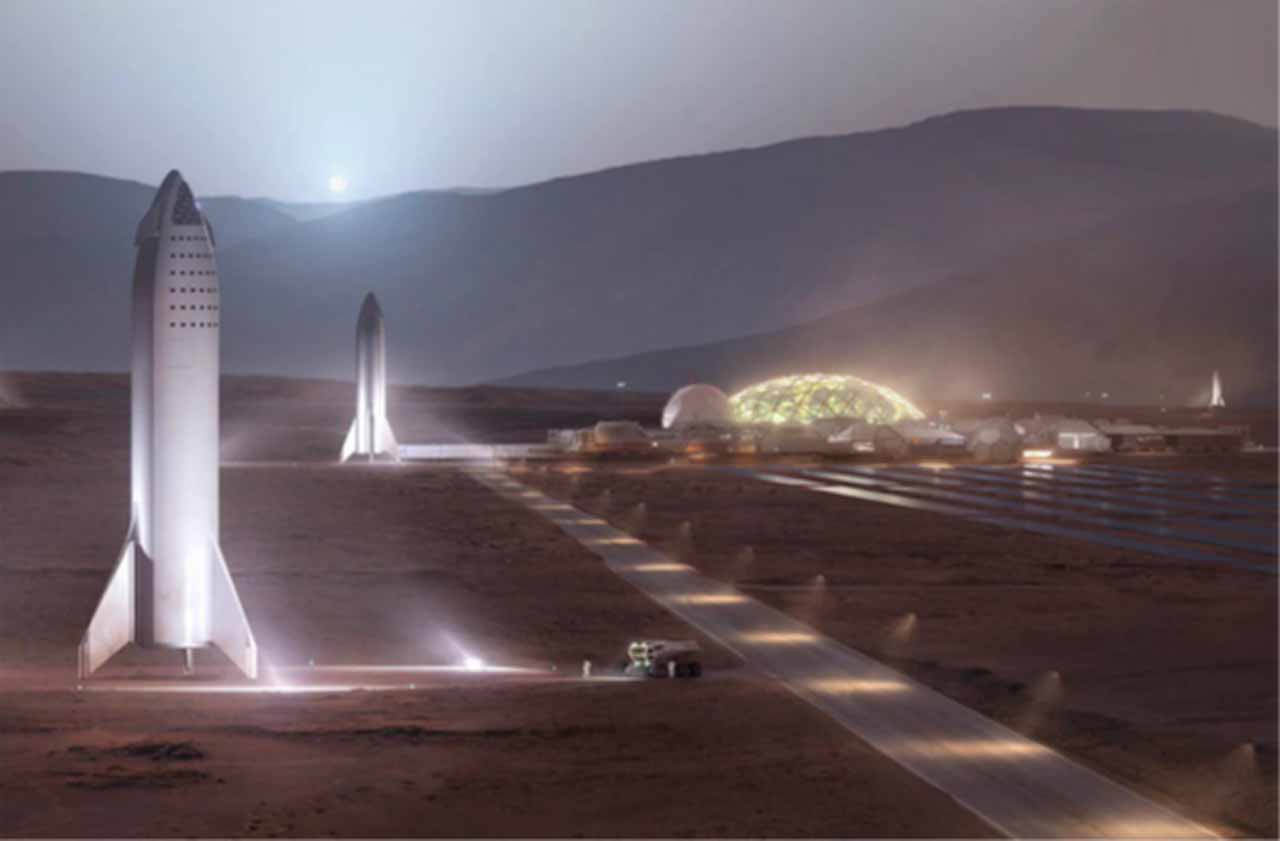
2. Paper Motivation — Elevators and the New Space
For the past 20 years, there has been a constant human presence in space. In the upcoming decades, we will enter the era when humans begin their first steps as a multi-planetary species. Human habitats on the Moon and Mars are already being planned. These facilities will need VT solutions for unloading equipment, supplies and people from the landers into craters, lava tubes and caves under the surface, and for operating undersurface activities, where we will harvest the Moon and Mars ground for underground ice and construction materials. Larger and larger spaceships and space stations — some are planned as massive “space hotels” — will also need to transport people for long distances both vertically and horizontally.
2.1 Our Holistic View
In the upcoming years, we are going to see increasing demand for VT solutions used in extraterrestrial environments: the Moon, Mars and space hotels. Thus, we believe that now is the time to build the concepts, find the materials and create the designs that will fit all requirements of those elevators.
A commercial environment for space-proven elevator materials and components will start to evolve in this decade, and the elevator industry worldwide must be a part of this important effort. If we will not take the lead, a different industry will take the role of planning and building these transportation solutions: space industries, train companies or other tech or transportation industries.
Furthermore, creating and testing elevator-related materials and products for the space industry will boomerang (spin-in) back to the “regular” elevators here on earth by introducing stronger, lighter and more efficient elevator materials, components and processes here on the ground.

2.2 What Is Already Under Construction?
Each space company or organization that plans to land humans or cargo on another celestial body builds its VT solution according to the requirements they define to fit its vehicles and missions. Some of the current space-based architecture that will need some sort of extraterrestrial elevator is SpaceX (plans to land humans on the Moon by 2025 and on Mars by 2035 using its “Starship” fleet), NASA (plans to land humans on the Moon in 2024) and more to come.
Other visionary plans include space hotels that will need some sort of vertical and horizontal transport solutions. In the future, they will most definitely employ artificial gravity using centripetal forces, and then VT solutions will be crucial.
3. The Challenge
When people think about space and elevators, the concept of a Space Elevator (or the Moon Elevator) always comes to mind. But there is a much more urgent transportation solution that will be implemented in this decade: VT solutions for landers on the Moon and Mars. These landers, which land vertically, stand 30-50 m high and can have many levels of storage, will need VT solutions to load and unload equipment and people on the surface of the Moon and Mars.
In the following decade, we plan to see larger and larger space bases and even colonies on the Moon and Mars, probably partly underground or in large caves and lava tubes. These human habitats will need elevators suitable to the harsh environments and needs. These colonies will mine and harvest as many materials as they can from the local ground since delivery of goods from Earth is very expensive. These working fields and quarries will also require VT solutions.
Further in the future, by the end of this decade, we could expect larger space structures being built, even for recreation, with or without artificial gravity. They, too, shall need elevators and moving walks.
4. Space Environment Challenges
Space is one of the most extreme environments imaginable. Outside the protective atmosphere of the Earth, objects are subjected to extremes of temperature, both hot and cold, fast temperature gradients and a significantly increased threat of radiation effects. The vacuum in space is also a great challenge for humans and materials due to a phenomenon called “outgassing.”
The first extreme condition a spacecraft must deal with is that of the launch. All spacecraft and humans are launched to space by rockets. The rockets and spacecrafts need to carry tons of propellants to give them enough energy to escape Earth’s gravitational pull. Because of the pull of Earth’s gravity, the larger and heavier the objects you want to get to space, the bigger and heavier the rockets and propellant will be. The rocket that places the spacecraft and/or satellite into orbit will also generate mechanical shocks and vibrations and batter it with extremely loud sound waves.
Temperatures in space, or on the Moon, can range from extremely cold, nearing absolute zero, to many hundreds of degrees above when in direct sunlight. On top of that, the temperature gradients are extreme, reaching around 200°C/min.
Radiation from our own Sun, and from other stars in the universe, can be extremely dangerous to electronic equipment due to energetically charged particles such as electrons, protons, alpha particles and gamma rays, and also can cause atom displacement or long-lasting total ionizing dose effects.
4.1 Materials in Space
Space’s (or the Moon and Mars) environmental effects on materials are very severe and complex because of the synergistic interaction of orbital environments such as high-energy radiation particles, atomic oxygen, micrometeoroids, orbital debris and ultraviolet irradiation interacting synergistically, along with thermal exposure. In addition, surface degradation associated with contamination can negatively impact optics performance. In an elevator case, the suspension cables, the car and other components will all be affected by the harsh space environment. Thus, elevator designers must have a deep understanding of the specific environment in which the elevator will operate, enabling the appropriate selection of materials to maximize safety and engineering performance, increase mission lifetimes and reduce risk.
Space missions require materials that can preserve functional integrity under extreme heat, thermal gradients, impacts and radiation. Some of the materials used in space are aluminum, nickel, titanium and their alloys, steel and filler materials; Kevlar, silica and silica-based materials, polymers based on acrylic and methacrylic polymers, polycarbonate and some polystyrene grades.
5. Call for Action
During the writing of this paper, we have met with some of the most dominant people in extraterrestrial elevator-related organizations. They all agreed that this is the time for the significant elevator companies to step in and take an essential role in designing these new, groundbreaking VT solutions and lead the way for building the ecosystem of space-proven elevator components and materials to support the future of VT in the New Space era.
6. The Space Elevator — History and Science Status
6.1 What Is a Space Elevator?
We can’t write this paper without being reminded of the Space Elevator concept that has excited the minds of researchers and sci-fi authors for decades and up to the point of writing this paper, was the sole connection of elevators and space fields.
The Space Elevator is a 100-year-old concept for a cable-based (tethered) VT vehicle, anchored to the ground and stretched up to the geostationary orbit, which is about 35,800 km above Earth’s equator. At this altitude, an object in orbit will appear stationary, which means it will stay almost above the same point on earth’s surface.
Thus, a light and strong enough cable (tether) lowered from an object at the geostationary orbit and anchored to the surface of the earth will remain under constant tension, and the object will rotate right above the anchor.
In the past, the Space Elevator was considered as nothing more than a science fiction idea, but due to much research done in the last decade and technology improvements, we are closer now to the moment when this idea can become a reality.
6.2 Why Can’t Humanity Keep Using Rockets Forever?
Currently, humankind’s only alternative to elevate payloads into orbit is to use rockets, which is risky, extremely polluting and expensive.
Table 1 shows an assumption of humanity’s space delivery requirements in metric tons per year for some estimated major projects that should reach maturity in those years.
| Demand in Metric Tons | 2031 | 2035 | 2040 | 2045 |
| Space Solar Power | 40,000 | 70,000 | 100,000 | 130,000 |
| Nuclear Materials Disposal | 12,000 | 18,000 | 24,000 | 30,000 |
| Asteroid Mining | 1,000 | 2,000 | 3,000 | 5,000 |
| Interplanetary Flights | 100 | 200 | 300 | 350 |
| Innovative Missions to GEO | 347 | 365 | 389 | 400 |
| Colonization of Solar System | 50 | 200 | 1,000 | 5,000 |
| Marketing & Advertising | 15 | 30 | 50 | 100 |
| Sun Shades at L-1 | 5,000 | 10,000 | 5,000 | 3,000 |
| Current GEO satellites + LEOs | 347 | 365 | 389 | 400 |
| Total Metric Tons per Year | 58,859 | 101,160 | 134,128 | 174,250 |
Table 1: Source: August 28, 2020, presentation by Michael (Fitzer) Fitzgerald — chief architect for International Space Elevator Consortium (ISEC) (This table is lacking Starlink satellites, which already placed more than 750 T of payload in space.)
Even though rockets get more and more efficient, they all must comply to the Tsiolkovsky rocket equation:
Where:
Δ𝑣 is the maximum change of velocity of the vehicle (with no external forces acting).
𝑚0 is the initial total mass, including propellant, “wet mass”.
𝑚𝑓 is the final total mass without propellant, a.k.a. dry mass.
𝑣𝑒 is the effective exhaust velocity, where:
𝐼𝑆𝑃 is the specific impulse in the time dimension.
𝑔0 is standard gravity.
𝑙𝑛 is the natural logarithm function.
Thus, all rockets still require a large amount of fuel to get a fraction of the rocket’s mass to space. We can look on the next example for a moon landing rocket:
Total rocket mass at liftoff = 100%, out of that:
- The booster stages + fuel to reach LEO is about 95%
- The mass of the fuel and engine to get to GEO (Geostationary Earth Orbit) is about 1.6%
- The mass of fuel for insertion to the Moon’s orbit is about 1.5%
- The mass for deorbiting and landing on the Moon is about 1.4%
Final mass on the Moon is only 0.5% from the rocket’s initial mass!
Moreover, rockets contribute to global warming due to CO2 emission in the atmosphere.
Much research has been done on the subject in previous years by many space-related agencies, companies, universities and other organizations — such as International Space Elevator Consortium (ISEC), which is a leader in the field today, LiftPort Group that leads moon-anchored Space Elevator concept and research, NSS (National Space Society), NASA, European Space Agency, Japan Aerospace Exploration Agency (JAXA) and many more — that have joined the engineering effort for a Space Elevator.
In 2018, JAXA, together with Shizuoka University in Japan, sent a cube-satellite based Space Elevator experiment to space that included driving a miniature elevator car between two satellites using a cable.
In the past 15 years, there have been many competitions for developing Space Elevator components, led by X prize, JSEA (Japan Space Elevator Association), BASPEC (Bavarian Space Elevator Challenge) and many more.
6.3 Space Elevator Architectures
Since the Space Elevator was originally suggested, many different architectures have been researched and published. Almost all of them include the same basic four components:
- The base station — an anchor to the surface
- The counterweight — an orbital space station.
- The tether (the main cable)
- The climber (the elevator car)
One of the main challenges was finding a cable material that could hold the extreme tension forces but also withstand the harsh space environment. Until the last few years, the main target material was carbon nanotubes. These nanometer tube-like strands, if they are pure and without any defects, could comply with the tension requirements. But, even after decades of R&D in many research labs around the globe, there is still no one who knows how to manufacture a pure enough material for more than a few dozen centimeters long, not to say thousands of kilometers. Still, carbon nanotubes are being researched and manufacturing methods are improving over the years.
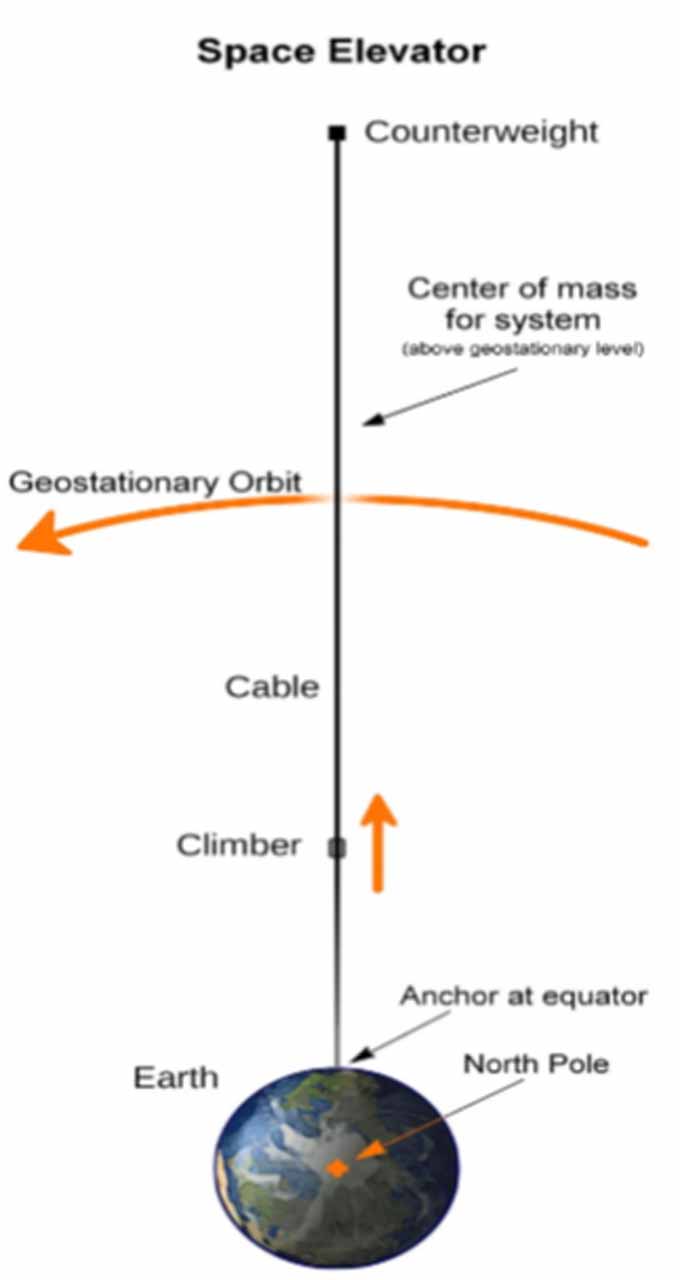
Since the cable of the Space Elevator must support its mass against Earth’s gravity all the way from the ground to the geostationary orbit and further into space, the tensile strength of the cable is a major challenge that is being researched. The mass of the cable is very hard to estimate accurately since it’s dependent on the final architecture of the entire system. Under reasonable assumptions of the architecture, the acceptable strength needed for the cable is about 50 GPa (that is 50,000 MPa, which is more than 490 atmospheres), so steel cables or any cables used for elevators on Earth today are not strong enough.
Another newly researched material that might be the answer is single crystal graphene. As with carbon nanotubes, single crystal graphene is one of the now-researched materials that can withstand the extreme tension requirements, mainly because it’s a 2D material that is about a molecule thick (sometimes referred to as “a macro scale molecule”). Thus, its weight is almost neglectable even for many kilometers of length. These sheets of material have been successfully researched to be highly durable, strong and fatigue-resistant and are now tested in longer and longer lengths and manufacturing rates — currently tested for tensile strength of 130 GPa.
6.4 Autonomous Maintenance
Since the Space Elevator is going to be exposed to the harsh space environment, including radiation and small space debris impacts (i.e., anything from small meteoroids to manmade space junk that is in orbit around the Earth), it is crucial to have smart, fast and autonomous maintenance mechanisms and other protections for the entire structure, including the cable (tether) of course, but also for the cars (the climbers), the anchors and the power supply.
As we all unfortunately know, elevators can have crucial safety incidents occurring during their lifetime. Emergency safety operations are a major challenge when the cable is more than 35,800 km long and the elevator’s car is moving at extremely fast speeds needed to make this long journey in a reasonable time frame of a day or two. To minimize risks, effective, fast and autonomous maintenance solutions that incorporate elaborated predictive maintenance must be developed.

7. The Bottom Line
All these challenges and more need to be addressed by the elevator industry, which has decades of experience in safely and vertically transporting people, supplies and equipment and must take a major part of the New Space Era of humankind. If we wait, we might miss the elevator!
We combined our skills to launch elevators outside of Earth’s atmosphere, to the new space era and welcome all elevator and space companies that want to join the initiative.
References
[1] “Dual space access architectures- rockets & Space Elevators,” Dr. Peter Swan, ISEC (International Space Elevator Consortium), a webinar July 2021.
[2] JSEA (Japan Space Elevator Association) home page jsea.jp
[3] BASPEC (Bavarian Space Elevator Challenge) home page baspec.schillergym.de
[4] “Space elevators getting first test in space,” an article by David Grossman at Popular Mechanics magazine, September 2018, popularmechanics.com/space/satellites/a22985989/space-elevators-getting-first-test-in-space/
[5] NASA Commercial Space Lecture Series, “Graphene infused space industry,” 2019. nasa.gov/sites/default/files/atoms/files/space_portal_nixene_publishing.pdf
[6] “Architecture Engineering and the Galactic Harbour”, Michael Fitzgerald, Chief Architect and Board Member, ISEC EVP & Co-Founder – Galactic Harbour Associates, Inc., a webinar August 2020.
[7] SPACEMATDB – Space Materials DataBase. spacematdb.com/spacemat
[8] NASA’s Arthemis program and related media. nasa.gov/specials/artemis
[9] “Space Elevator Technology and Hraphene,” an interview with Adrian Nixon, CEO of Nixor Ltd., August 2018. azom.com/article.aspx?ArticleID=16371
[10] During the preparation of this paper, between 2021-2022, we have had related meetings with:
• Dr. Pete Swan, president of ISEC
• Dr. Eliad Peretz, lead researcher for New Space Missions at NASA Goddard Space Flight Center.
• Mr. Michael Laine, president, chief strategic officer of LiftPort Group
• Many other space and elevator-related professionals who shared with us their perspective for elevators in the space era.
Get more of Elevator World. Sign up for our free e-newsletter.








